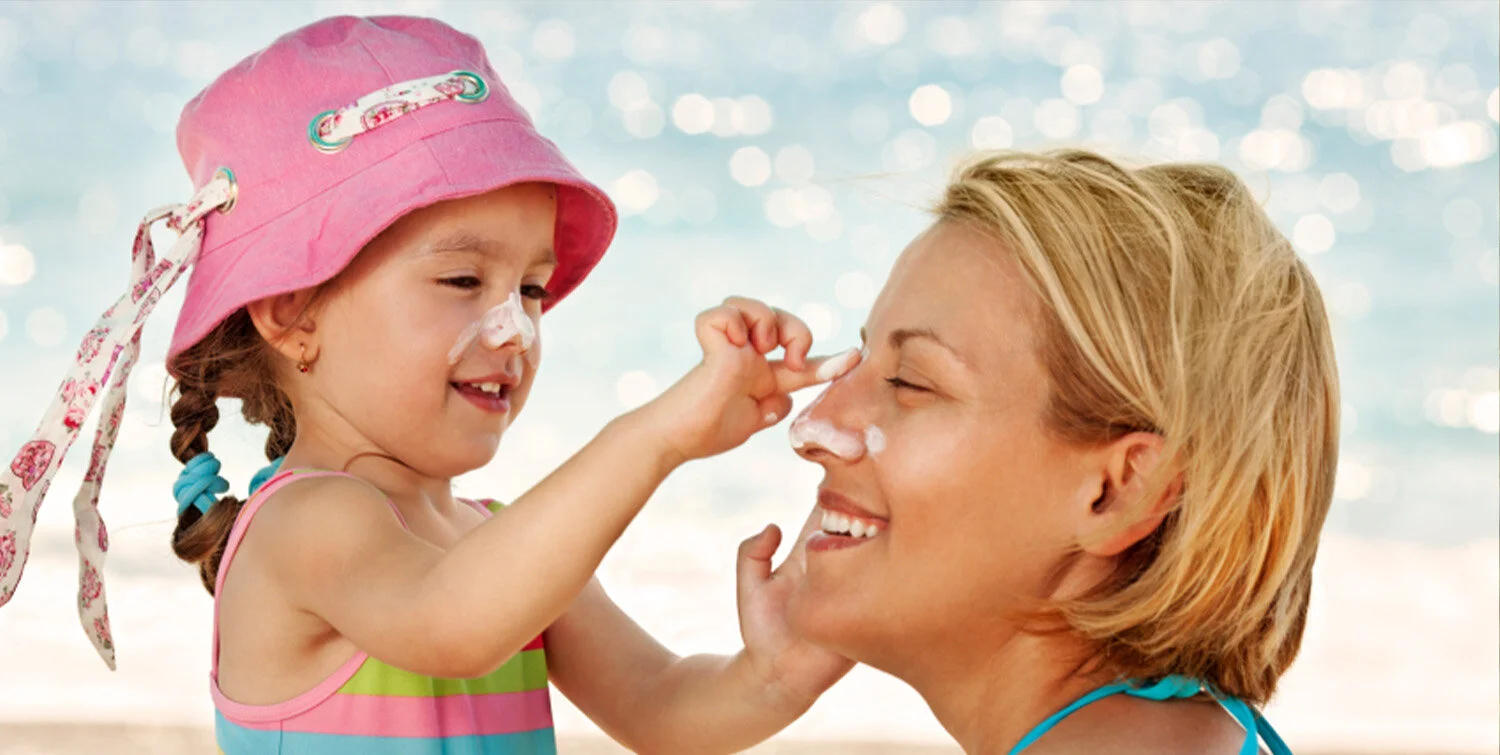Skin Safety in the Summer Sun
Skin Safety in the Summer Sun
Written by Jennifer Korneski (Somerset County 4-H & Healthy Living Coordinator)
Summer is here and we are ready to enjoy warm sunny days at the shore, cool off at the pool, and play in the park. While we are enjoying fun in the sun, it is important to be aware of the effects on our skin and take precautions to protect ourselves and our family.
The ultraviolet rays of the sun, and artificial tanning beds, can damage our skin in as little as 15 minutes. While UVA and UVB rays differ in how they affect the skin, they both can cause skin cancer and irreversible damage. UVA rays are found on the earth’s surface and are responsible for premature aging and wrinkling of the skin. Although UVB rays are mostly absorbed by the earth’s ozone layer, they can cause burning of the skin.
According to the National Cancer Institute, sunburn is caused by overexposure to ultraviolet radiation. Sunburn symptoms include redness, warmth, tenderness, or edema, and may cause pain or blistering. Annually, over 33,000 sunburns are reported that require emergency room visits and may occur among people of all racial and ethnic groups.
Skin cancer is the most common form of cancer in the United States. One out of five Americans will be diagnosed with skin cancer in their lifetime. Basal and squamous cell carcinomas are the two most common types of skin cancer. If detected early they are very treatable. Melanoma, the third most common type of skin cancer, is the deadliest form.
Protection from UV rays is important all year, not just during the summer. UV rays can reach us on cloudy days, so we need to be mindful of using sunscreen anytime outdoors. UV rays also reflect off of surfaces like water, cement, sand, and snow which increases exposure.
Sunscreens are assigned a sun protection factor (SPF), which is a number that rates how well they block UV rays. Higher numbers indicate more protection. There is no data to show that using a sunscreen above 50 will have any added value. When used as directed, which on average is about one ounce of sunscreen every 2 hours, sunscreen with SPF 30 will block 97% of UVB rays.
Broad spectrum means that the sunscreen offers equal protection of UVA and UVB rays. The American Academy of Dermatology Association says that most Americans only use 25 – 50 percent of the recommended amount of sunscreen. Adults should use at least two tablespoons of broad spectrum, water-resistant sunscreen for exposed skin on body which includes your ears and tops of feet, which people often forget! Use about a nickel size amount for face. Sweating and swimming can make sunscreen wear off faster so be sure to reapply often. Don’t forget to check the expiration date of your sunscreen. If it doesn’t have an expiration date, the standard shelf life is three years. Do not store sunscreen in your car over summer the months, as the extreme heat will lessen the effectiveness.
Here are a few sun safe tips in addition to using sunscreen that you can practice to protect your family:
Avoid prime time between 10am-4pm when sun is the strongest.
Use the shade of an umbrella or tree to reduce sun exposure.
Wear long sleeves or tightly woven clothes like a rash guard when at the beach, for added coverage.
Wear a hat that has a brim all the way around that shades your face, ears, and the back of your neck. A tightly woven fabric, such as canvas, works best to protect your skin from UV rays.
Wear sunglasses to protect your eyes from UV rays and reduce the risk of cataracts. They also protect the tender skin around your eyes from sun exposure.
Don’t forget to apply sunscreen or lip balm with SPF to your lips.
Perform regular skin self-exams to detect skin cancer early. If you notice new or suspicious spots on your skin that change color or shape, itch or bleed, contact your dermatologist.
Enjoy the outdoors this summer, but be sun smart!
SOURCES
“Basic Information About Skin Cancer.” Centers for Disease Control, https://www.cdc.gov/cancer/skin/basic_info/index.htm. Accessed 26 May 2021.
“Cancer Trends Progress Reports.” National Cancer Institute, https://progressreport.cancer.gov/prevention/sunburn. Accessed 26 May 2021.
“1991-2019 High School Youth Risk Behavior Survey Data.” Centers for Disease Control and Prevention (CDC), http://yrbs-explorer.services.cdc.gov/. Accessed 26 May 2021.
“Sunscreen FAQs.” American Academy of Dermatology Association. https://www.aad.org/public/everyday-care/sun-protection/sunscreen-patients/sunscreen-faqs. Accessed 26 May 2021.
“Sun Safety.” Centers for Disease Control. https://www.cdc.gov/cancer/skin/basic_info/sun-safety.htm. Accessed 26 May 2021.



